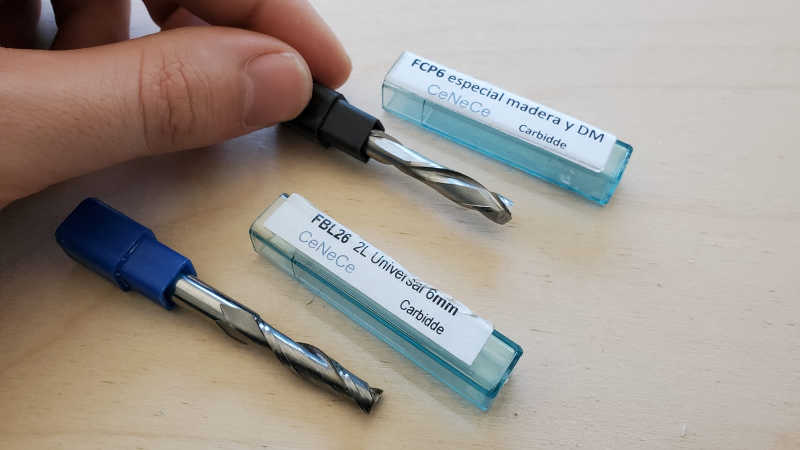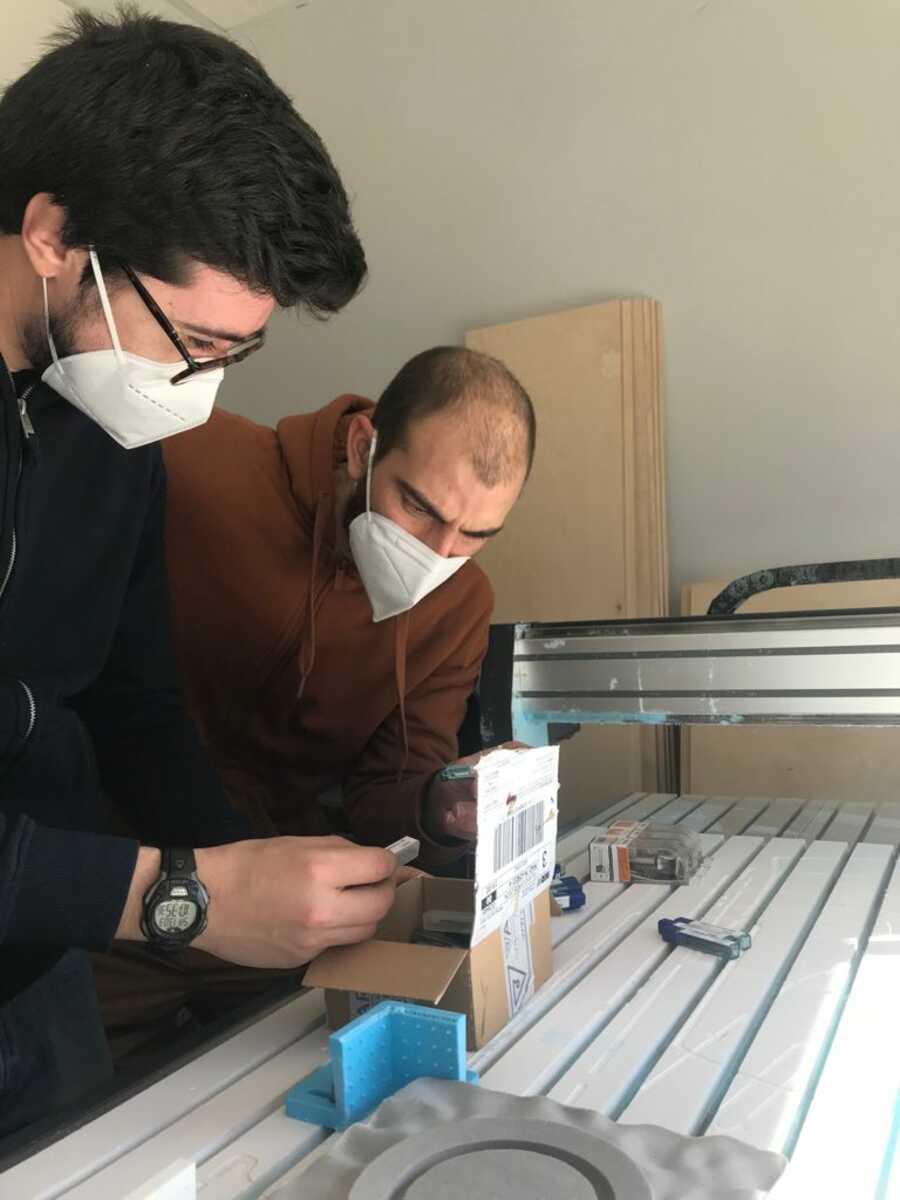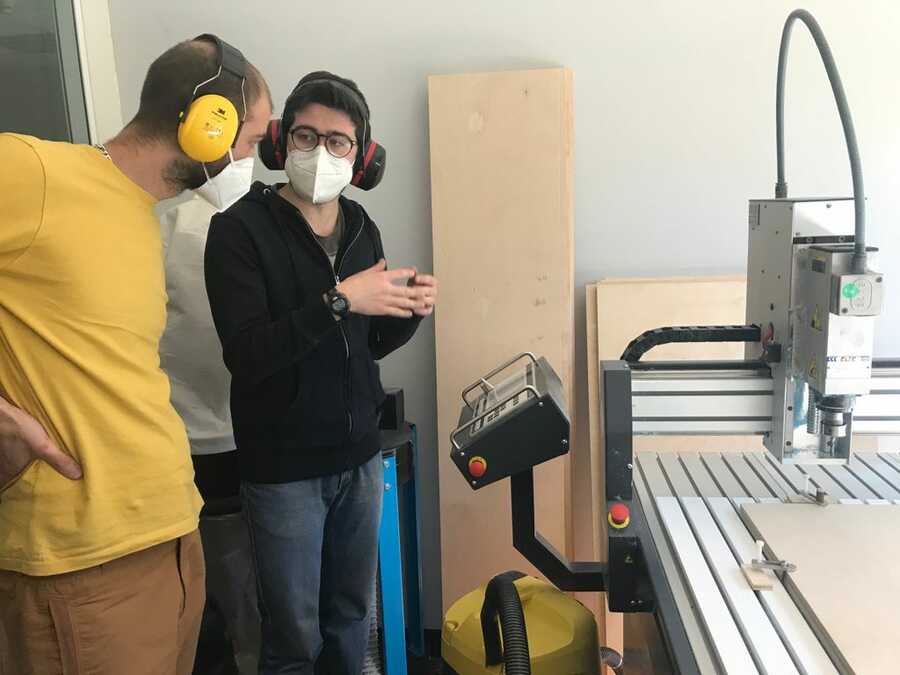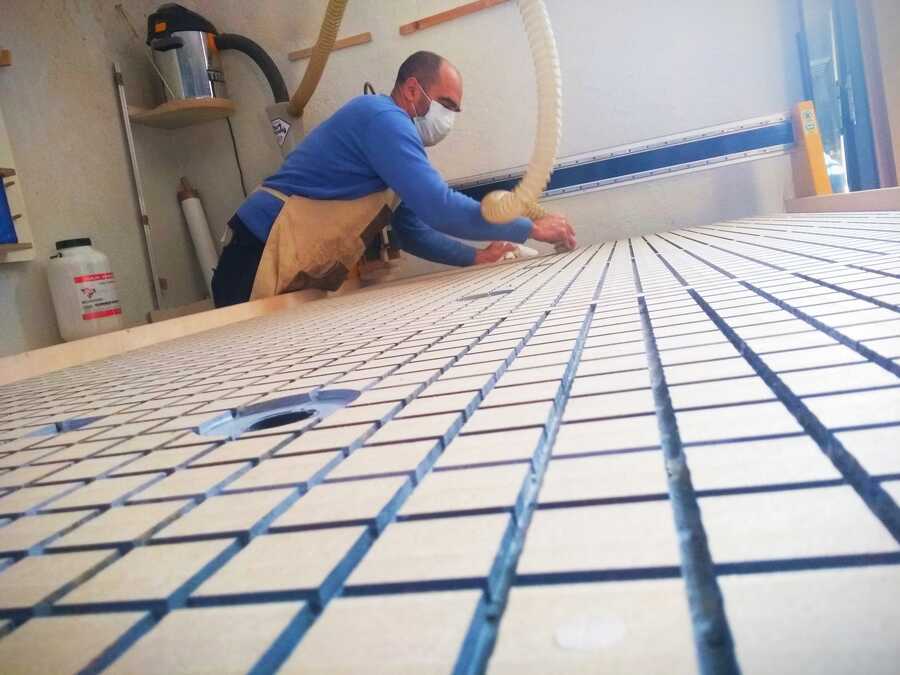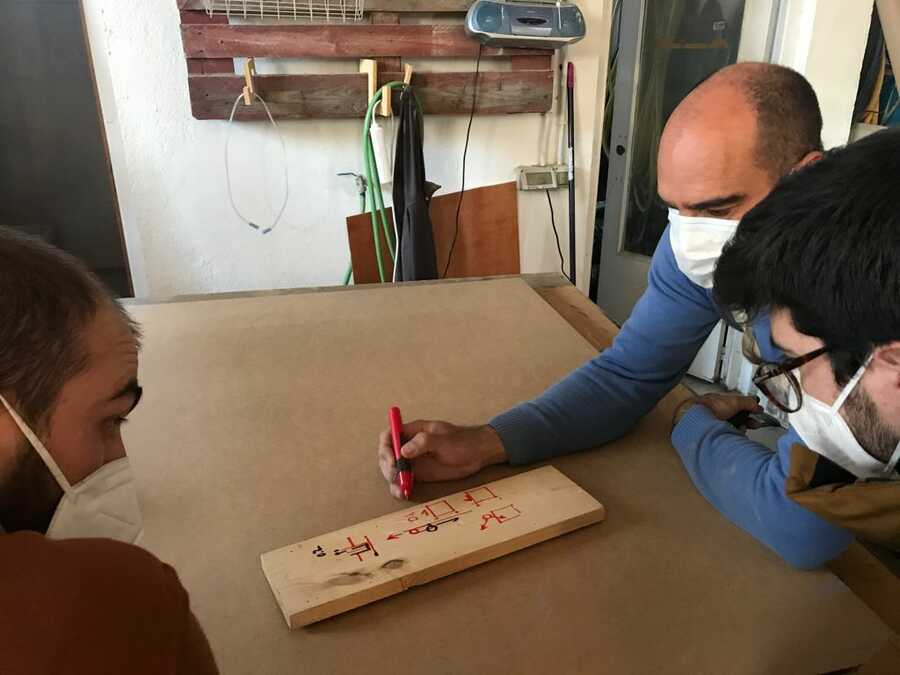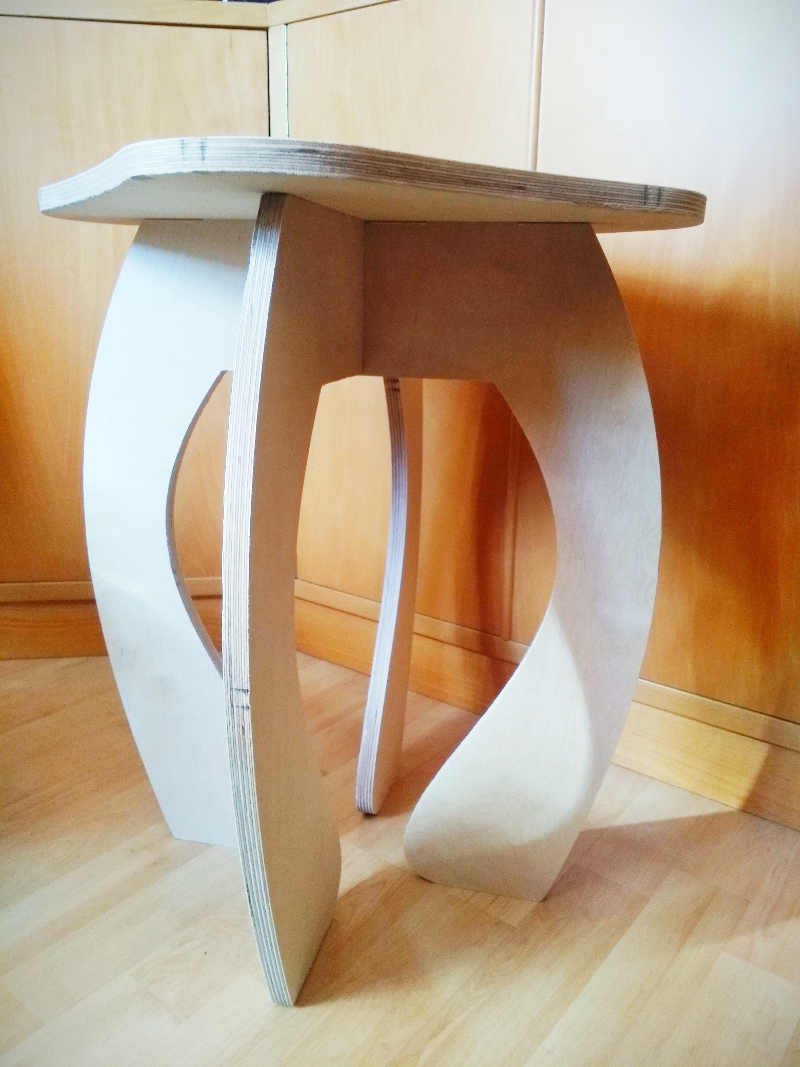Week7
Computer controlled machining
Go to:Group assignment Individual assignment
Group assignment
Test runout, alignment, speeds, feeds, and toolpaths for your machinedocument your work (in a group or individually)
For this week's assignment, since our workshop here in Cuenca is in re-construction, I have kindly been received in FABLAB EU in Madrid by Alberto. There we met with Lorena and also visited Mauro´s workshop.
There, Alberto introduced us to the FR 210 cnc machine from Alarsis, it has a 2000 mm x 1000mm working area, has its own control unit and there, we prepare the jobs with rhinocam and load it from a usb drive.
He explained the security measures established in the lab. Wear ears and eyes protection, no hanging clothes, hairs or jewelery. Where to stand when the machine is functioning and where the emergency stops are.
We saw some basics of the machine like how to change the milling bits.
And how to use the controls to manipulate the axes and set the origines.
Mount and secure the material with clamps...
After doing a few dimension tests.
And speed and feed tests with a universal milling bit (6mm) and a special milling bit for laminated wood and MDF.
We determined that the best performance was at 12000 rpm, a pass of 2.5mm depth at a feed speed of 1500mm/min using the special milling bit for laminated wood and MDF.
Here is some of the set up in Rhinocam where we set the material thickness (15mm), type of process used (cut in or out of the path), the feed and speed, depth of passes and select the type of milling bit used.
In Mauro's workshop, we got to see how he set up and prepared his vacuum-workholding table, the different milling bit he uses to do that. We also talked about adding dog bones and the different types of processes that can be used in order to get better results.
Straight x1 flute milling bit and 30mm flatning
Go to:Group assignment Individual assignment
Individual assignment
Make (design+mill+assemble) something big
For the design, since it's the first time using this machine and I am also traveling, I decided to make a stool. I designed it in fusion360 adding parameters to allow for material thickness adjustments.
I used the inspect tool to make sure there was no overlapping parts in the assembly.
Exported the DXF files to have an .SVG file.
Using the parameters we determined during the group assignment, the design was set up in rhinocam and saved into the pendrive.
...secure the material, set the origins and sent the job.
Cleaning up and assembly...
While I was putting it together, I noticed a few things that could probably be avoided next time.
For example, the milling bit burns the sides when processing the tabs.
I may also have made the joints a little on the tight side.
And ofcourse I also created some nice additional features...
In the end it came out well enough and functional.
Learning outcomes
Demonstrate 2D design development for CNC productionDescribe workflows for CNC production
Have you?
Linked to the group assignment pageDocumented how you designed your object (something big)Documented how you made your CAM-toolpathDocumented how you made something BIG (setting up the machine, using fixings, testing joints, adjusting feeds and speeds, depth of cut etc.)Described problems and how you fixed themIncluded your design files and ‘hero shot’ photos of final object















